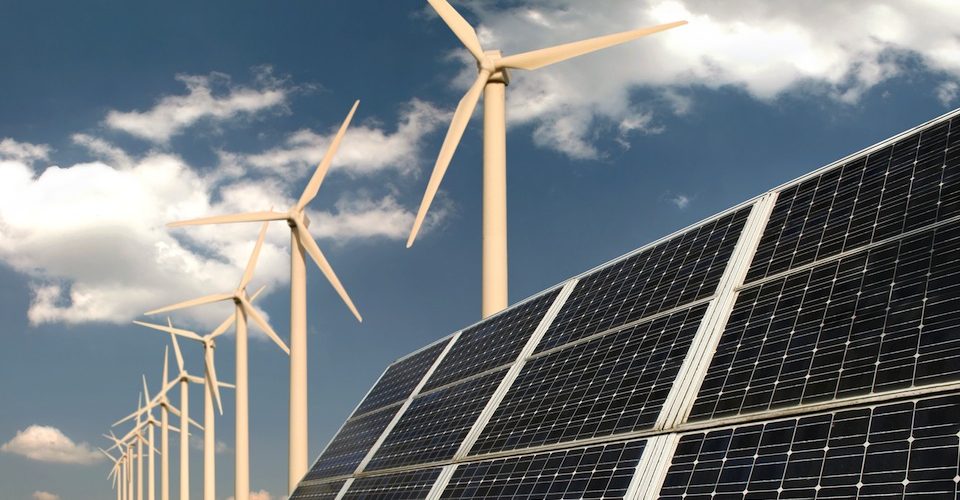The interesting thing about solar panels is that they don’t actually work better in the heat. In fact, cold weather provides the most efficient conditions for converting solar energy into electricity. That being said, winter is also a bad time for solar power in Canada, because the sun is at an oblique angle and doesn’t hit the panels straight-on. But on cool, bright summer days our solar output is terrific! Clouds put a damper on solar production no matter where you are in the world, but new storage systems will allow for the storage of increased amounts of solar energy during sunny times for use on cloudy days.
Solar technologies include more than just the PV panels most commonly seen on roofs. They also include things like concentrated solar power, which uses mirrors to reflect sunlight onto a single concentrated point, converting the light into heat. Next generation solar technologies will allow shirt pockets to charge iPhones and windows to heat buildings. Some even mimic the photosynthesis of leaves, offering an opportunity for solar power to provide small-scale solutions to homes without other sources of electricity.
Let’s ground this lesson with a case study: The Medicine Hat concentrated solar power project.
Another interesting case is the solar-powered boat that visited the east coast this summer. Mr. Campana and Mr. Roberts debated its merits and imperfections.
Finally, Mr. Campana answered the question: Is Solar Unsustainable?
Wind power depends on three main factors: wind speed, turbine size and air density. The bigger the windmill, the more power it produces, which is why the newest turbines have blades longer than a blue whale (although somewhat lighter in weight).
Wind has drawn perhaps the most attention of all renewable technologies, in part because the height of the largest turbines and the soft “whoosh” of the blades gives them a visibility that other renewable technologies lack. Critics are divided on whether this visibility is a good thing or not.
There is a theoretical limit of roughly 60 per cent to a windmill’s efficiency, which would seem to indicate that there’s something wrong with the technology, but it’s actually because if the efficiency level were 100 per cent and all of the wind blowing through the turbine was captured and converted into energy, there would be no wind on the other side of the blades. Like a traffic jam, the arrested wind would back up until there was no wind to move the blades. So wind can only be so efficient, but there’s more than enough wind in the world to provide all the energy we could possibly need!
Let’s take a look at some of the controversies around wind turbines:
Killer Turbines?
Putting the “windmills kill birds” argument into perspective. Let the “stop the house cats” campaign begin.
Not in my Backyard
On why wind turbines might sound like nails on a spinning metal chalkboard, just not to you.
The Nocebo Effect: Are Wind Turbine Health Problems Real?
New evidence suggests negative health effects from wind turbines are caused by anti-wind campaigns themselves.
Nuclear
Nuclear power is the most contentious of any form of energy human beings have yet invented. It comes in two varieties: fission and fusion. Fission is produced through the splitting of the atom and is the technology behind all of our current nuclear power plants. The same process is used to create atomic bombs. Fusion is produced through the joining of atoms and it promises an even greater quantity, except that no one has ever been able to harness it. The atom-joining process is what powers the sun. Fusion power is a so-called “magic bullet” fix, which is to say that if its practical application were as effective as theorized, it would solve all of our clean energy problems.
Nuclear power currently accounts for 15 per cent of Canada’s electricity, but disasters in Chernobyl, Three Mile Island and Fukushima have cast global doubt over the true level of benefit derived from this clean energy source. In addition to the risk of disaster, nuclear waste requires a disposal site where it will be safe (or rather, humans will be safe from it) for thousands of years or more. Many societies are currently asking themselves whether the potential is worth the risk.
Not sure what to think? Check out these articles for more on nuclear energy: Nuclear Fusion and the Great Global Gamble, Mourning the Slow Death of Nuclear Power, Web Extra: Stop Saskatchewan’s Nuclear Reactor, Nuclear Hot Spots Map Shows Cumulative Effects
Read these book and documentary reviews: Pandora’s Promise, Energy and Empire: The Politics of Nuclear and Solar Power in the United States
And check out this issue of A\J from 1977: Nuclear Energy 7.1. Like other back issues explored in Night School, it’s discounted down to just $4.00 while Night School is running! Just use the coupon “nightschool4” at checkout.
Community Solutions for Energy Transitions
Intro to Renewable Energy would like to welcome guest lecturer Mr. Campana to the class room to talk about renewable energy co-ops! [You can also jump to the previous weeks’ Nuclear, Wind and Solar Energy primers, if that’s what you’re looking for.]
If a global transition from fossil fuels to renewable energy was only a matter of educating the public, we’d be there by now. There’s clearly more to the challenge of stopping climate change than simply making the public aware of it and a great deal of that has to do with how renewables are perceived.
At least some part of the solution seems to demand that community members hold a stake in the operation of the windmill/solar farm/etc. Community renewable energy co-operatives have shown themselves to be an excellent means of educating the public on the benefits of clean energy while simultaneously providing a piece of the financial pie to a wide section of the community.
The protest against fossil fuels has been about more than just the bare facts surrounding the unsustainability of these energy sources: it’s also been about the top-down implementation of these technologies in communities with no control and no say over how the energy is distributed or who receives the economic benefits. Renewable energy co-ops are advocating for a new energy technology, but also for a new system that embraces public input on community energy use.
Learn more from these case studies: The Power of Energy Co-operatives, Lessons from Germany and Community-Owned Energy.
Stu Campana is an international environmental consultant, with expertise in water, energy and waste management. He is the Water Team Leader with Ecology Ottawa, has a master’s in Environment and Resource Management and writes the A\J Renewable Energy blog. Follow him on Twitter: @StuCampana.













